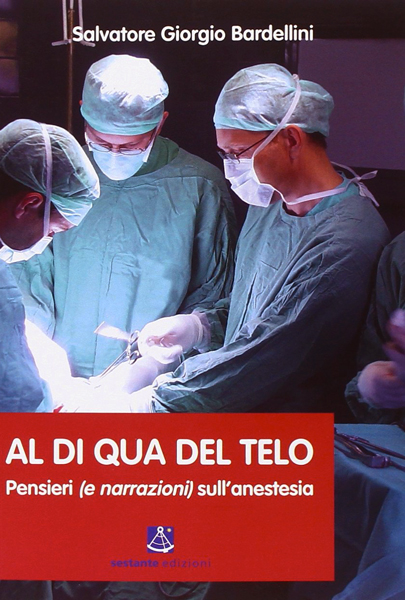BEYOND SLEEP: THE ANESTHESIOLOGIST, GUARDIAN OF THE THRESHOLD

There is a moment—just before anesthesia takes effect—when every patient asks: “Will I wake up?”
It’s an ancient, primal question, one that touches the deepest roots of human fear: eternal sleep.
This is where the work of the anesthesiologist begins—not when a drug is administered or a patient intubated, but when that anxious gaze is met and, if possible, transformed into trust.
In his book “On This Side of the Drape,” Giorgio Bardellini—an anesthesiologist and author—undertakes a rare endeavor: he brings to light the hidden side of medicine, the one that lies behind the surgical drape, beyond the technical gesture, in the silence of hands that keep vigil.
Through these pages, Bardellini shows us that anesthesia is not just a medical discipline, but a true existential space, where science, ethics, empathy, and responsibility intersect.
The figure of the anesthesiologist, though central to the success of any surgical procedure, is often marginalized in the public imagination.
The surgeon is the “savior,” the protagonist; the anesthesiologist fades into the background.
Yet, as Bardellini writes, it is precisely the anesthesiologist who watches over the limbo into which the patient fully surrenders, defenseless and unconscious.
It is the anesthesiologist who guides the passage, ensures that the journey into unconsciousness is safe, and that there is a return.
To be an anesthesiologist means caring for another person’s most extreme vulnerability, when they are quite literally “in your hands.”
It means making decisions—often in solitude, under pressure, with little room for error.
It means staying clear-headed within a complex and frequently ungrateful system.
Bardellini calls for the anesthesiologist’s role to finally be recognized with the dignity and centrality it deserves.
Between Technique and Humanity
One of the book’s strongest themes is the need to integrate technical expertise with human sensitivity.
Anesthesia is not only a medical act; it is also a relational act.
The preoperative interview is not a bureaucratic formality, but a unique opportunity to connect, to ease fears, to humanize the surgical experience.
And when the patient does not speak – or pretends to be confident – the anesthesiologist must activate deep listening, to detect the silence that conceals the dread of the abyss.
The author urges his colleagues not to be consumed by routine, haste, or cynicism.
He reminds us that even within technical repetition, every patient is a new world, with a different life story, fears, and hopes that must be honored.
Only those who keep this awareness alive can remain motivated, humane, and truly present.
“Work is tiring,” the author admits.
Not just physically, but ethically, emotionally, and invisibly.
Anesthesiologists often work through the night, in emergencies, unsupported, making critical decisions in isolation.
And when something goes wrong, it’s easy to become the scapegoat.
Despite all this, the profession continues to draw individuals who choose to protect life from the quiet side of the drape—with dedication and without seeking the spotlight.
Bardellini also voices a criticism of a system that fails to acknowledge this effort: inadequate legal frameworks, lack of inclusion among “high-stress” professions, and a poor organizational culture around shared safety.
His appeal is not a complaint, but a clear-headed call: if we want effective medicine, we must value all the professionals who make care possible—not just the visible ones.
Telling Stories to Exist
One of the most touching aspects of the book is the value it places on storytelling.
Bardellini collects stories, conversations, and anecdotes from colleagues and patients. Why?
Because storytelling is an antidote to isolation, a space of resistance against dehumanization.
To tell one’s story is to recognize oneself, to find meaning in repeated gestures, to build a collective memory that restores dignity to a profession often rendered invisible.
In this sense, “On This Side of the Drape” is also a political act: it exposes invisibility—but not with bitterness.
It does so with elegance, restraint, and the humility of someone who has chosen to be present “when everything else falls silent.”
Medicine is not only made up of heroic acts, but of attention, listening, and patience.
The anesthesiologist is the guardian of the boundary between life and unconsciousness, between pain and protection.
They are the one who “puts the body to sleep” but keeps watch over the soul.
And for that, they deserve to be seen, heard, and remembered.
The full book in the attached PDF (in Italian) ↓
